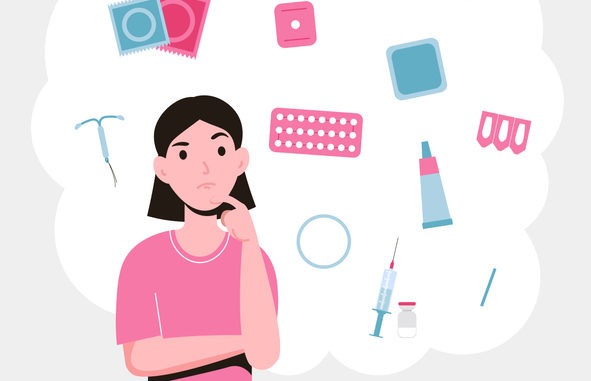
More and more women are coming forward to share their stories of a painful IUD procedure. Healthcare services need to get better at recording these experiences, says Stephanie O’Donohue
This is an edited version of an article that originally appeared on The BMJ
Examples of excruciating pain experienced during the fitting of an intrauterine device (also known as an IUD or coil) have been in no short supply over the past month. After the release of a patient-led survey focusing on pain scores, and the information (or lack of) given to women before the procedure, media coverage has been extensive.
Perhaps the most notable was when journalist Naga Munchetty kicked off a feature on Radio 5 Live by detailing her own IUD fitting, describing it as “one the most traumatic physical experiences” of her life. She fainted twice and said that she “felt violated, weak, and angry” – an experience which has been echoed by hundreds, if not thousands, of other women since.
Dawn Harper, a GP and presenter who appeared as a guest on the show, argued that most women do not feel this pain, and that this level of trauma tends to affect those who have not given birth. However, there are two major flaws with this analysis, highlighted by the testimonies of countless women who have shared their experiences through the survey and, on social media and online forums.
Firstly, of those who report excruciating pain, many specifically describe it as being much worse than when they gave birth. Secondly, there is no routine collection of pain scores or patient feedback when it comes to IUD procedures so how can anyone be confident that this affects a small number of women? The data simply aren’t there to support such claims.
I too experienced excruciating pain during an IUD fitting almost 10 years ago in my late 20s. Like many others, I was told to take paracetamol and that any pain would be mild. There was no discussion of any risk factors that may make me more susceptible to pain or that there was any risk of very high levels of pain.
The pain I felt during the fitting was like nothing I had ever experienced before; it felt like a knitting needle was piercing my womb. I screamed uncontrollably and cried throughout. I was left shaken for days, and traumatised for many years, extremely fearful to return for it to be removed.
Curious as to how my primal response had been observed and recorded by the clinicians, I recently requested my GP notes. I really felt that it must have left those present nearly as traumatised as me – that this must have been so rare it made an impression; but there was no mention of pain at all in the notes – it would appear they were oblivious.
Dismissed
In fact, research does back this up. Studies have shown that healthcare professionals’ perception of patient pain during gynaecological procedures is not an accurate reflection of the patient’s pain experience. These findings may go some way to explaining why so many women report feeling dismissed when they communicate their pain during an IUD fitting. However, it’s important to note that some people have described how they ‘froze’ and were unable to speak when they felt immense pain during their IUD insertion; staff being aware of their own ‘blind spots’ when it comes to recognising distress is, therefore, vital.
Beyond the physical pain experienced by these people is the psychological trauma many report feeling for days, or sometimes years, later that leaves a lasting legacy of harm. This is heightened by the absence, in many cases, of true informed consent being obtained before the IUD procedure; many women are not forewarned of any possibility of high levels of pain, instead being told to expect it to be ‘uncomfortable’ or ‘similar to period cramping’.
With the NHS drastically understaffed, the task of maintaining safe, rights-respecting services is understandably challenging, but this misinformation can prevent women from being able to weigh things up and make the choices that feel right for them.
The violation is, therefore, not just felt physically but to their trust and human rights too; the impact of this triple harm must not be underestimated. It can create a fear of healthcare services and affect a patient’s readiness to attend important future gynaecological appointments, such as cervical cancer screenings – and so, the ripples of the trauma create space for harm to continue in missed diagnoses and untreated health issues.
We need a much better understanding of these experiences and their knock-on effects if things are to improve. Take my own case; had I been asked to rate my pain or overall experience, healthcare staff would have obtained an insight that could have been used to help make improvements; healthcare services, and the professionals within them, need to routinely collect feedback and data to inform clinical practice in gynaecology, and capture what matters to patients. This can only happen if patient insight is valued as evidence, and those with lived experience are involved in co-designing research.
There are some wonderful clinicians championing change that would lead to better gynaecological experiences for women, but it’s difficult finding those who are willing to speak up – particularly where cultures of fear and blame exist. Sadly, we know that around a third of NHS staff do not feel they would be treated fairly if they raised a concern. This, no doubt, affects the ability of frontline staff to advocate for better, safer care for patients – but we desperately need their insights, and desire to learn from patient evidence, in order to understand where the barriers and challenges lie, so that solutions can be found and future harm minimised.
Patients are speaking up to bring about change and prevent other people from suffering. Let’s make sure we listen to them.

Be the first to comment